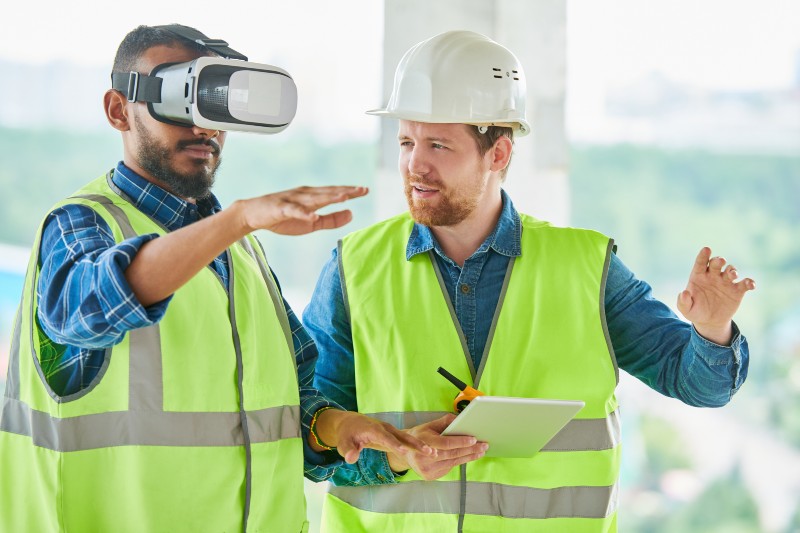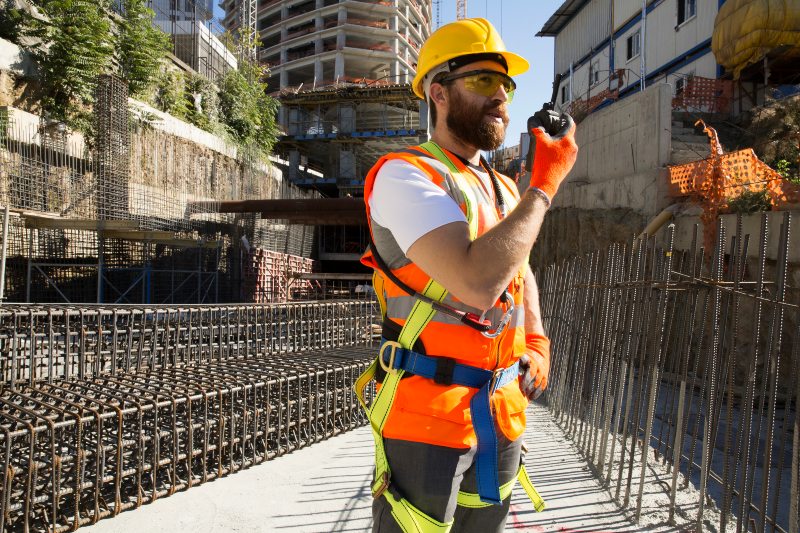Using Wearable Technology in Construction to Reduce Incidents
The construction industry has long been synonymous with high-risk environments where safety is a top priority. Thanks to advancements in wearable technology in construction, companies now have powerful tools to enhance safety and streamline operations. From real-time health monitoring to hazard detection, construction wearable technology is transforming job sites into safer and more efficient environments.
If you’re a construction manager or safety officer in South Central Wisconsin, this guide will explain how implementing digital technology in construction can reduce workplace incidents and improve project outcomes.

What is Wearable Technology in Construction?
Wearable technology in construction refers to smart, connected devices worn by workers on-site to improve safety and efficiency. These devices are equipped with sensors, GPS, and advanced software to monitor various aspects of a worker’s health, performance, and environment. Common examples of wearable tech in construction include smart helmets, safety vests, goggles, and even biometric monitoring devices.
Wearables can track vital signs such as heart rate, body temperature, and fatigue levels, alerting workers and supervisors to potential health risks or overexertion. They also detect environmental hazards like high temperatures, harmful gases, or unsafe proximity to heavy machinery, providing real-time alerts to reduce accidents.
Additionally, wearable technology can improve communication and efficiency on-site. For instance, augmented reality (AR) goggles allow workers to view project plans, instructions, or safety guidelines directly in their line of sight without needing to consult physical documents. GPS trackers in safety vests help supervisors monitor worker locations and ensure compliance with safety protocols.
Types of Construction Wearable Technology
Here are some examples of emerging advanced technology in construction that’s already making significant impacts:
- Smart Helmets – Equipped with sensors to detect head impacts, fatigue, and environmental changes.
- Exoskeletons – Wearable tech to reduce physical strain and prevent musculoskeletal injuries during tasks like heavy lifting.
- Smartwatches & Fitness Trackers – Monitor vital signs such as heart rate, body temperature, and stress levels.
- Wearable Cameras – Enable real-time video monitoring and recording for incident analysis.
- GPS Trackers – Ensure workers’ locations are monitored to enhance safety, especially in hazardous site zones.
Benefits of Wearable Technology in Construction Safety
Adopting wearable technology construction safety protocols offers significant advantages. Here’s how:
- Real-Time Monitoring of Worker Safety Metrics
Wearable devices provide instant updates on workers’ vital signs and surroundings. For instance, a smartwatch can detect an increase in body temperature or heart rate that might signal fatigue.
- Immediate Alerts for Potential Hazards
Devices like smart helmets alert workers to dangers such as proximity to heavy machinery or unstable scaffolding. This enables quick preventative measures, reducing the likelihood of accidents.
- Improved Communication and Coordination
Connectivity features in wearables enable seamless communication among team members across expansive job sites. For example, wearable cameras allow supervisors to monitor progress remotely.
- Enhanced Data Co.llection for Incident Analysis
Data from wearables is invaluable for post-incident analysis. Patterns in accidents or near-miss scenarios can help construction managers develop stronger safety protocols.
- Increased Efficiency and Productivity
Exoskeletons and other wearables reduce physical strain, allowing workers to perform tasks with greater comfort and speed. This results in less fatigue and higher productivity

Emerging Technologies in Construction Safety
The future of emerging technologies in construction is promising. Smart vests integrated with LED lights, gas sensors, and fall detection features are becoming more sophisticated. Additionally, augmented reality (AR) glasses, like Microsoft HoloLens, are now being used to overlay digital project data onto physical job sites, reducing planning errors and enhancing hazard awareness.
Challenges of Implementing Wearable Technology in Construction
Despite the numerous benefits, there are factors construction companies need to consider:
- Cost of Adoption – High initial costs of devices might deter smaller firms.
- Data Privacy – As devices collect sensitive worker data, companies must ensure compliance with privacy regulations.
- Training Resistance – Workers may be hesitant to adopt new technology without clear training and communication.
By proactively addressing these challenges, construction managers can ensure a seamless rollout of wearables that align with safety goals.

Why Construction Companies Should Invest in Wearable Technology
Investing in technological advances in construction industry safety adds value in more ways than one. Beyond reducing incidents, wearables improve team morale, lower insurance premiums, and enhance overall productivity.
At Advanced Building Corporation, we prioritize safety and innovation in all our projects. From state-of-the-art planning to cutting-edge technology adoption, our goal is to create work environments that are both safe and efficient.
Whether overseeing a new industrial build or upgrading an existing facility, wearable technology can help your project succeed while safeguarding your team.
Want to Reduce Workplace Incidents?
For over 30 years, Advanced Building Corporation has delivered high-quality design and construction services in South Central Wisconsin. We specialize in commercial construction, metal buildings, government and municipal projects, and more.
Partner with a company that values innovation and safety as much as you do. Contact us to discuss how we can help implement wearable technology innovations into your next project.
